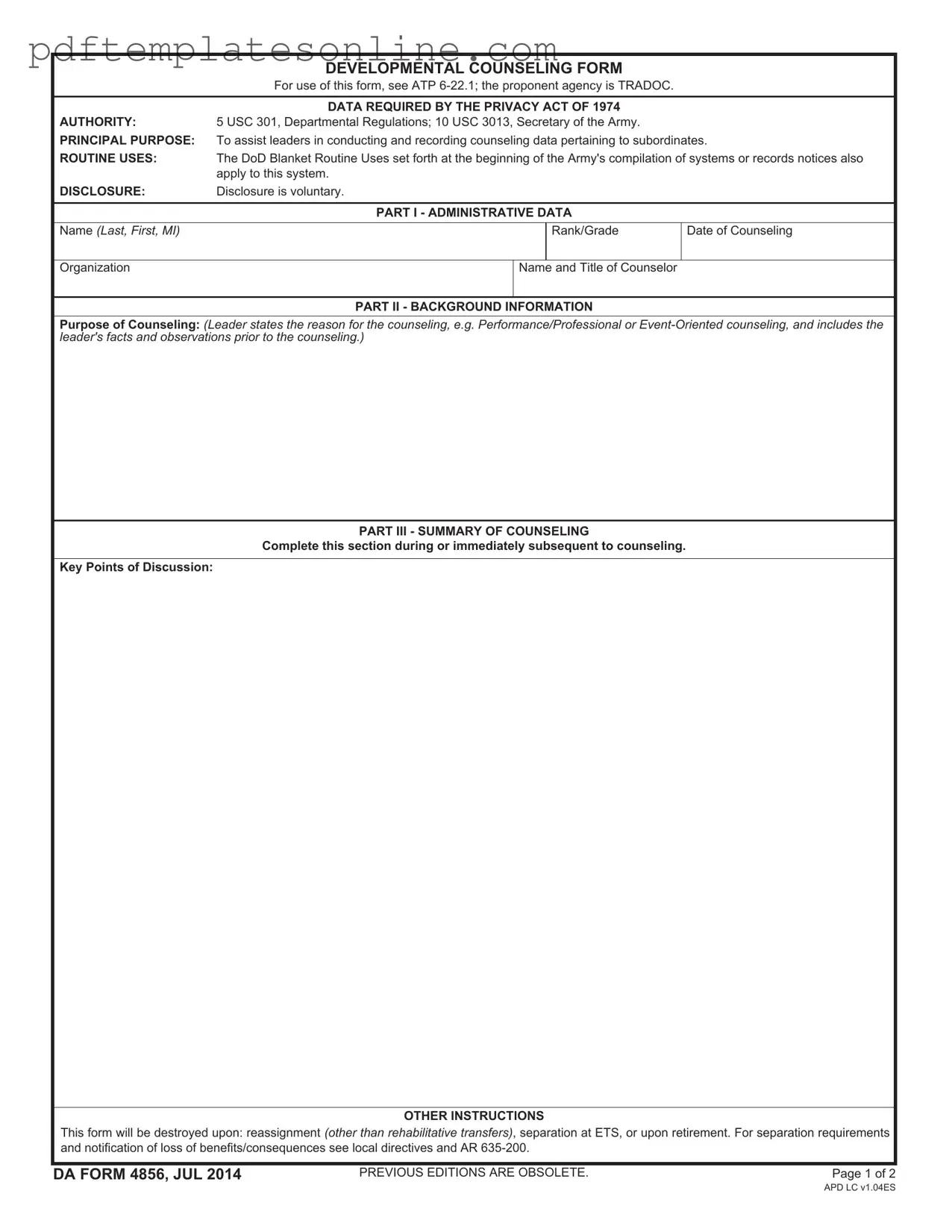Blank DA 4856 Form
The DA 4856 form, also known as the Developmental Counseling Form, is a tool used by military leaders to document counseling sessions with their subordinates. This form serves to guide soldiers in their personal and professional growth, providing a structured way to address performance, behavior, and future goals. Understanding how to effectively use the DA 4856 can enhance communication and foster a positive development environment.
Access DA 4856 Editor Now
